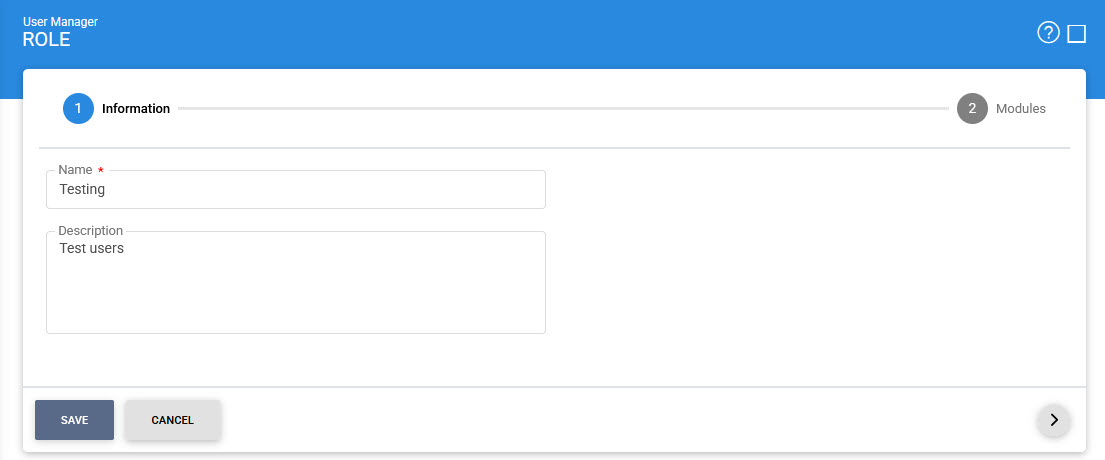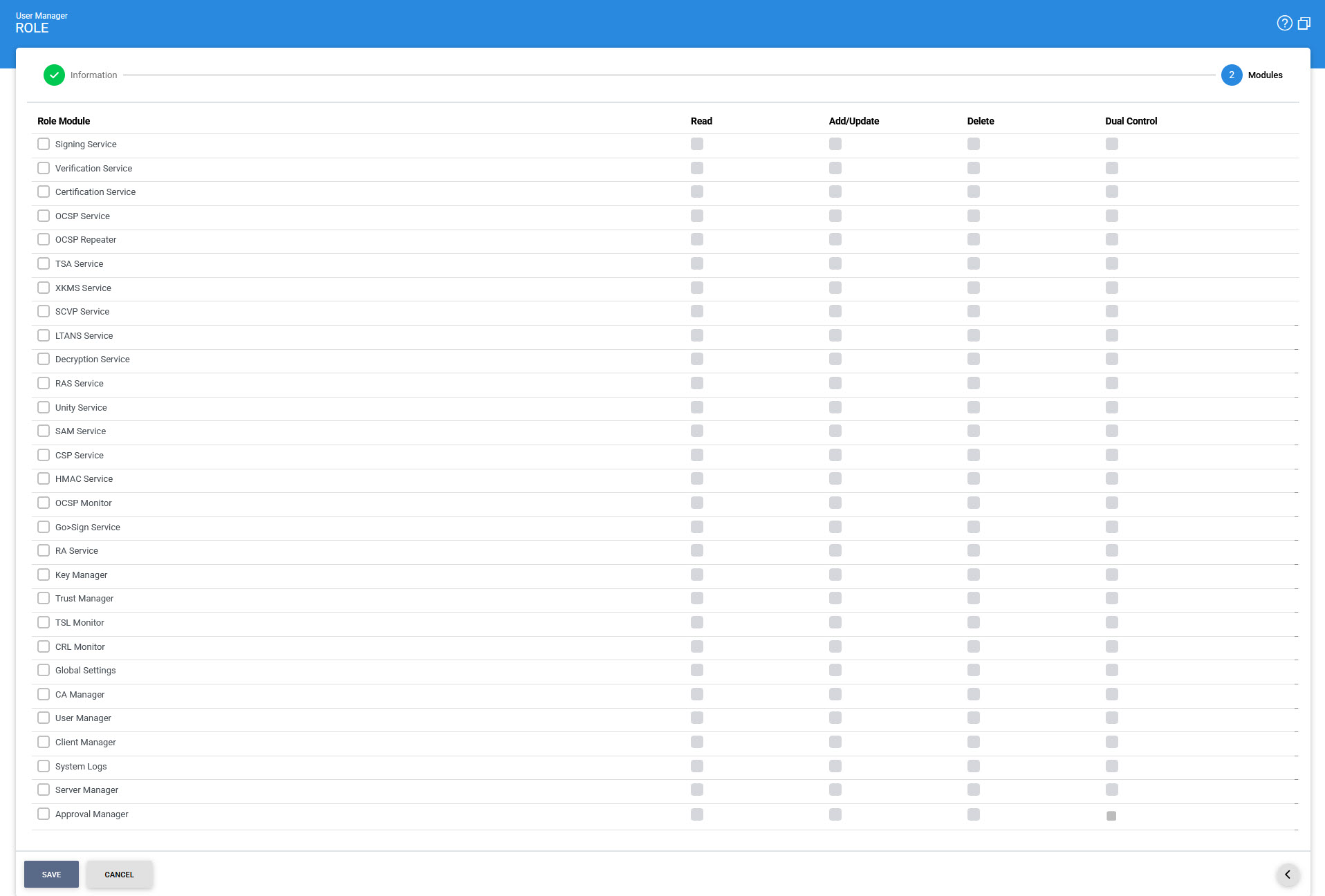Creating New Roles
When a new role is to be created, the following screen is displayed by pressing '+' button:

In the above screen, we need to fill the required fields. Click on the Save button to save the changes. Once done, it takes you to roles screen: from where user can select the roles as per privilege, it will display the following screen:

Here, the user can select the roles as per privilege. Clicking on the Save button will save the configured changes.
The description of the above fields are as follows:
|
Item |
Description |
|
Role Name |
It is strongly recommended to define a meaningful name, e.g. in the screenshot we have chosen Service user as someone who has full access to only the Service Managers of each service module. |
|
Role Description |
Add a description as a reminder of the purpose of the role. |
|
Read |
When a Module or Sub-Module is selected then automatically Read permission is given to that role. If you do not want to allow some module/sub-module then do not check that module/sub-module. |
|
Add/Update |
If this checkbox is checked, the role is given the permission to add or update against the selected module/sub-module. Permissions are applied on all sub-modules by checking this checkbox at the module level. |
|
Delete |
If this checkbox is checked, the role is given the permission to delete against the selected module/sub-module. Permissions are applied on all sub-modules by checking this checkbox at the module level. |
|
Dual Control |
If this checkbox is checked, the role is given the permission of dual control against the selected module/sub-module. Dual Control mean a request must be approved by some security officer before the action(add/update, Delete) takes place. Permissions are applied on all sub-modules by checking this checkbox at the module level. Note: You can not enable the Dual Control unless an user with role Security Officer (Who will approve the operations) is already configured in the ADSS Server. |
|
|
At least one user must exist with Access Control privileges, otherwise you will not be able to enter in the system. |
See also

